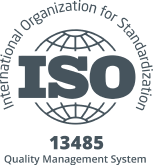Hermetic Sealing of Magnets in Implantable Medical Devices
Ensuring Safety and Longevity
The utilization of magnets in implantable medical devices has revolutionized the field of biomedical engineering, providing innovative solutions for various medical conditions. However, the integration of these magnetic components poses significant challenges, particularly in ensuring their longevity and biocompatibility within the human body. One of the critical technologies employed to address these challenges is hermetic sealing.
Understanding Hermetic Sealing
Hermetic sealing is a process that ensures a device or component is completely airtight, preventing the ingress of gases, liquids, and other contaminants. For implantable medical devices, this technology is pivotal in protecting sensitive electronic components and magnets from the harsh bodily environment. The seal is typically achieved using materials that provide robust barriers against moisture and biological fluids.
The Importance of Hermetic Sealing in Medical Devices
The human body is a highly corrosive environment due to the presence of various electrolytes, enzymes, and fluctuating pH levels. When exposed to such conditions, magnets and other electronic components in medical devices are susceptible to corrosion and degradation, which can lead to device failure. Hermetic sealing acts as a protective barrier, ensuring the device’s functionality and reliability over its intended lifespan.
Materials Used in Hermetic Sealing
Several materials are used in the hermetic sealing process, each selected based on the specific requirements of the device and its operating environment. Common materials include:
- Glass: Known for its excellent hermetic properties and biocompatibility, glass is often used to encase electronic components and magnets within medical devices.
- Metals: Metals such as titanium and stainless steel are frequently used due to their strength, durability, and resistance to corrosion.
- Ceramics: Ceramics offer high resistance to thermal and chemical stresses, making them ideal for use in challenging environments.
Applications of Hermetic Sealing
Implantable medical devices with hermetically sealed magnets are utilized in various medical fields, including:
Cochlear Implants
Cochlear implants, which restore hearing for individuals with severe hearing loss, rely on hermetically sealed magnets to secure the external and internal components of the device. The seal ensures the magnets remain functional and protected from bodily fluids, maintaining the integrity of the auditory signal transmission.
Cardiac Devices
Pacemakers and defibrillators are critical cardiac devices that monitor and regulate heart rhythms. Hermetic sealing protects the electronic components and magnets within these devices from the corrosive effects of blood and tissue fluids, ensuring their long-term reliability.
Drug Delivery Systems
Implantable drug delivery systems utilize magnets to control the release of medication within the body. Hermetic sealing prevents contamination and degradation of the magnets, ensuring precise and controlled drug administration.
Challenges and Innovations in Hermetic Sealing
While hermetic sealing offers significant benefits, it also presents challenges. The process requires precise manufacturing techniques and rigorous testing to ensure the integrity of the seal. Innovations in materials science and engineering are continually improving the effectiveness and reliability of hermetic seals.
Advancements in Materials
Research into new materials, such as biocompatible polymers and advanced ceramics, is enhancing the durability and performance of hermetic seals. These materials offer improved resistance to corrosion and mechanical stress, extending the lifespan of implantable medical devices.
Microfabrication Techniques
Microfabrication techniques, including laser welding and chemical vapor deposition, allow for the creation of highly precise and reliable seals. These techniques enable the production of smaller and more complex medical devices, expanding the range of applications for hermetic sealing technology.
Testing and Quality Assurance
Ensuring the reliability of hermetic seals involves extensive testing and quality assurance procedures. Devices undergo rigorous environmental and mechanical stress tests to simulate the conditions they will encounter in the human body. These tests are critical in identifying potential failure points and ensuring the device’s performance over its intended lifespan.
Future Directions
The field of hermetic sealing for implantable medical devices is continually evolving, driven by advancements in materials science, engineering, and medical technology. Future developments may include the use of smart materials that respond to environmental changes, further enhancing the functionality and reliability of medical devices.
Biodegradable Materials
Research into biodegradable materials for temporary implantable devices is gaining traction. These materials offer the potential for devices that provide therapeutic benefits and then safely degrade within the body, eliminating the need for surgical removal.
Integration with Wireless Technology
The integration of wireless technology with hermetically sealed implantable devices is another promising area of development. Wireless communication and power transfer can reduce the need for invasive procedures and improve patient comfort and compliance.
Conclusion
Hermetic sealing is a critical technology in the development and deployment of implantable medical devices. By providing robust protection against the harsh bodily environment, hermetic seals ensure the longevity and functionality of these life-saving devices. As research and innovation continue to advance, the future holds exciting possibilities for even more reliable and sophisticated medical technologies.








